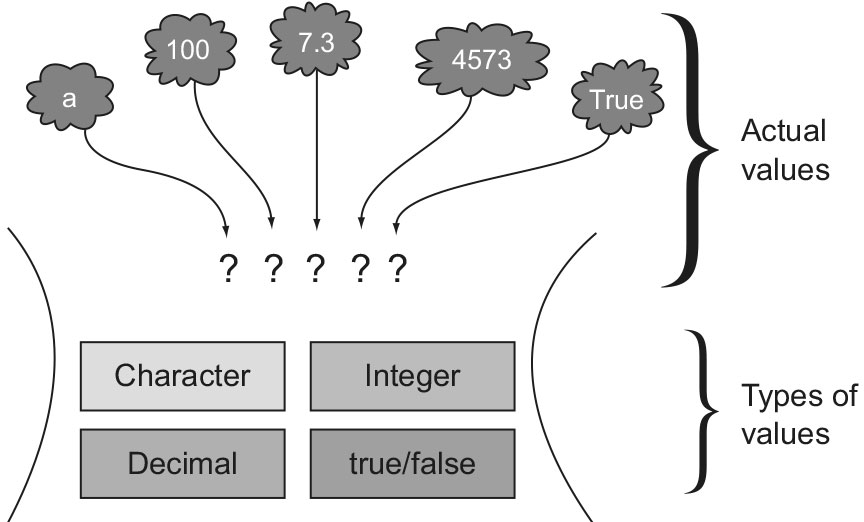| Lesson 6 | Primitive Types |
| Objective | Primitive types and range of values |
Primitive types in Java
Describe the primitive types and range of values associated with each type.
Java variables may store the values of primitive types or references to objects. Java supports the following eight primitive types:
boolean- Consists of thebooleanvaluestrueandfalse.byte- Supports 8-bit integer values from -128 to 127.char- Supports 16-bit Unicode [1] characters whose values range from 0 to 216 - 1.short- Supports 16-bit integer values whose values range from -(215) to 215 - 1.int- Supports 32-bit integer values whose values range from -(231) to 231 - 1.long- Supports 64-bit integer values whose values range from -(263) to 263 - 1.float- Supports 32-bit floating point values whose values range fromFloat.MIN_VALUEtoFloat.MAX_VALUE. It also includes the valuesFloat.NaN(not a number),Float.NEGATIVE_INFINITY, andFloat.POSITIVE_INFINITY.double- Supports 64-bit floating point values whose values range fromDouble.MIN_VALUEtoDouble.MAX_VALUE. It also includes the valueDouble.NaN(not a number),Double.NEGATIVE_INFINITY, andDouble.POSITIVE_INFINITY.
The
The values
NaN (not a number) value is used with floating point types to indicate the result of an undefined mathematical operation. The values
POSITIVE_INFINITY and NEGATIVE_INFINITY are used to represent infinite values.
Remember the ranges of each of the primitive types. You will see questions on the certification exam that test your knowledge of them.
Primitive Variables
A variable defined as one of the primitive data types is a primitive variable. Primitive data types, as the name suggests, are the simplest data types in a programming language. In the Java language, they are predefined.
The names of the primitive types are quite descriptive of the values that they can store. Java defines the following eight primitive data types:
- char
- byte
- short
- int
- long
- float
- double
- boolean

[1]Unicode: A 16-bit character set that includes ASCII and provides support for international characters.